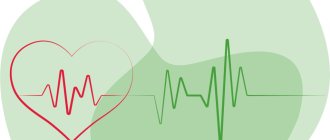The answers to all these questions are very important, because depression is one of the most famous mental disorders that is mentioned inappropriately in modern society.
Clinical depression is not a medical term, but a colloquial expression that some people use to describe depression that requires treatment from a psychiatrist.
The term “depression” is most often referred to in films, literature and even in everyday communication. But often the concept of depression as a disease is misunderstood by people and is taken as a temporary condition when there is a loss of energy, lack of motivation and low mood. Meanwhile, depression is a disease that often requires specific therapy.
What is depression, how to recognize it, in what case is the expression “clinical depression” appropriate, and when is it necessary to apply treatment?
Description of the disease
The current International Classification of Diseases classifies depression and depressive disorders as a nosological group of conditions, united by the coding F00-F99, under which various mental disorders are collected. Depression in ICD-10 can be found under codes F32 and F33.
In a general sense, depression is a mental state characterized by extremely negative psychosomatics:
- Depressed mood;
- Pessimistic perception of life with loss of the ability to experience joy;
- Retardation of motor activity.
These manifestations represent the classic “depressive triad.”
To determine whether a patient has depressive conditions and the severity of depression, experts have empirically identified three types of criteria.
- Type “A” corresponds to:
- The duration of the depressive episode is more than 2 weeks;
- No history of manic or hypomanic symptoms in the patient
- Type “B” involves the manifestation of more than two symptoms, including:
- Increased general fatigue;
- Daily depressed mood independent of the external situation;
- Significant loss of interest in activities that previously brought significant pleasure.
- Low self-esteem and loss of self-confidence;
- Feelings of guilt that are inadequate to reality or causeless self-condemnation;
- Suicidal thoughts and manifestations;
- Hypermotility or behavioral inhibition;
- Sleep disorders;
- Changes in appetite.
In accordance with the provisions of ICD-10, the criteria for episodes of depression assume three degrees of severity:
- Mild degree: the presence of 2 or more symptoms of list “B” and the sum of more than 4 symptoms included in lists “B” and “C”. This degree is characterized by some concern that the patient expresses about the presence of typical symptoms of depression against the background of decreased social activity and difficulties in performing usual work;
- Moderate severity: more than 2 symptoms “B” and more than 6 in total “B” and “C”. The condition is characterized by significant difficulty in performing work and social responsibilities;
- Severe episode: 3 symptoms listed in list “B” and the sum of the criteria of lists “B” and “C” exceeding 8. This episode may be accompanied by psychotic syndromes. Suggests the presence of suicidal thoughts and actions, agitation, feelings of worthlessness, hallucinations and unlikely social adaptation. Doing work and living is extremely difficult and unlikely.
Depression in neurology and neurosurgery
If the tumor is localized in the right hemisphere of the temporal lobe, melancholy depression with motor slowness and retardation is observed.
Melancholy depression can be combined with olfactory, as well as autonomic disorders and taste hallucinations. Patients are very critical of their condition and have a hard time experiencing their illness. Those suffering from this condition have reduced self-esteem, their voice is quiet, they are in a dejected state, the rate of speech is slow, patients quickly get tired, speak with pauses, complain of memory loss, but accurately reproduce events and dates.
Localization of the pathological process in the left temporal lobe is characterized by the following depressive states: anxiety, irritability, motor restlessness, tearfulness.
Symptoms of anxious depression are combined with aphasic disorders, as well as delusional hypochondriacal ideas with verbal auditory hallucinations. Sick people constantly change position, sit down, stand up, and get up again; They look around, sigh, and peer into the faces of their interlocutors. Patients talk about their fears of foreboding trouble, cannot relax voluntarily, and have poor sleep.
Causes of depression
Trigger factors that can lead to depression are quite a few external events and body conditions. All these causes of depression according to their type are combined into several groups.
- Psychogenic depression, which is caused by the mental reaction to unfavorable external circumstances: divorce, mental violence, loss of work, loss of loved ones, conflicts at work, creative failures, chronic stress;
- Endogenous depression caused by genetic predisposition;
- Physiological depression provoked by changes in hormonal levels;
- Somatic-symptomatic depression, which is based on symptoms of bodily diseases that serve as physiological causes of depression;
- Iatrogenic depression caused by side effects from taking pharmacological drugs, alcohol, drugs and precursors.
Gender and age differences, due to differences in hormonal levels, social integration and the degree of development of the emotional-volitional sphere of personality, have different effects on the development of depression in an individual.
Currently, every tenth person over the age of forty is susceptible to depression. In the age group over 65 years, depression occurs in every third inhabitant of our planet.
Causes of depression in men
Stress as a cause of depression is significant for both sexes, and the reaction to depressive states is different in women and men. It is statistically significant that women are 5 times more likely to suffer from depression compared to men, but, regardless of the cause of depressive disorder, men are 80% more likely to have suicidal thoughts.
The most common causes of depression in men are:
- Imaginary or real decline in social status;
- Chronic failures in personal life;
- Work that is often unloved, but requires constant psycho-emotional stress and full concentration;
- Stress caused by the influence of “urban” factors, unfavorable ecology of the city, rhythm, excessive noise and irritatingly bright visual images;
- Illness or loss of loved ones;
- A sharp deterioration in health, including in the intimate sphere, including the acute experience of menopause;
- Receiving psychological trauma;
- Changes in living conditions: change of place of residence with loss of the usual social circle, financial difficulties;
- Postnatal experiences associated with changes in family composition and increased responsibility;
- The inability to realize gender roles in a family in which a man should be the leader;
- Creative failures;
- Genetic determination, the mechanism of which has not been fully identified;
- Lack of proper physical activity.
Causes of depression in women
In women, the causes of depression are only slightly different from the “male set.” This:
- Physiological reasons associated with constantly changing hormonal levels: puberty, menstrual cycle, sexual characteristics, childbirth and the postpartum period, menopause;
- Social reasons: dissatisfaction with personal life, the need to show masculine, leadership qualities at work and at home;
- Experience of loss of the opportunity to realize the feminine principle due to immersion in a career;
- High emotionality, characteristic of women, and leading to more acute experiences of problems;
- Fears associated with loss of youth and attractiveness;
- Problems in the intimate sphere;
- Stress caused by attempts to realize oneself in several roles at once: mother, wife, caring daughter in relation to elderly parents, successful businesswoman, in social activities;
- Rejection of dependence on the decisions of a man or brighter and more successful female colleagues at work;
- Psychological trauma associated with the nuances of the onset of sexual activity;
- Immersion in the problems of raising and ensuring the lives of children;
- Loneliness and lack of demand.
Depression history
It is a mistake to believe that the disease is common only in our time. Many famous doctors since antiquity have studied and described this disease. In his works, Hippocrates gave a description of melancholy that is very close to a depressive state. To treat the disease, he recommended opium tincture, cleansing enemas, long warm baths, massage, fun, drinking mineral waters from the springs of Crete, rich in bromine and lithium. Hippocrates also noted the influence of weather and seasonality on the occurrence of depressive conditions in many patients, as well as improvement in condition after sleepless nights. This method was subsequently called sleep deprivation.
Types of depression
Like any disease, depression has various forms of manifestation, determined by personality characteristics, the causes of its occurrence and living conditions.
Experts distinguish two large groups of depression:
- Unipolar, that is, those in which the mood remains stably within one “negative” pole, without pronounced outbursts.
- Bipolar, which is characterized by mixed affective manifestations, alternating manic and hypomanic episodes.
In the current edition of ICD-10, in relation to psychopathological conditions, a classification is applied according to the variants of the course of depression:
- A one-time depressive episode.
- Bipolar depression with alternating manic and depressive phases.
- Cyclothymia, which involves cyclical fluctuations in the emotional background from a stable melancholy mood to an elevated mood. Sometimes these fluctuations are interspersed with periods of psychologically stable stability.
- Dysthymia, or a prolonged mental disorder in a mild form, but causing destructive changes in the somatic and mental status of the patient.
According to the DSM-IV (Diagnostic and Statistical Manual of Mental Disorders) classification system developed by the American Psychiatric Association, the following types of depression are distinguished:
- Clinical depression, or the so-called major depressive disorder with a special case - resistant (resistant) depression. The resistant form is characterized by the absence of a positive clinical and therapeutic effect, despite treatment carried out in at least two consecutive courses.
- Minor depression, in which at least two main diagnostic symptoms have been observed for at least two weeks.
- Atypical depression is accompanied by specific symptoms: “emotional reactivity”, increased appetite, increased drowsiness.
- Postpartum, or postnatal, depression is caused by physical and mental stress accumulated during pregnancy, emotional instability of the prenatal and birth periods, hormonal disruption in the body and fears associated with responsibility for the child’s future.
- Recurrent transient depression occurs episodically approximately once a month. Moreover, the depressive episode itself lasts several days, less often – up to two weeks. To make a diagnosis of recurrent depressive disorder, it is necessary that such manifestations continue for at least a year and, for a female patient, be independent of the menstrual cycle.
- Dysthymia is a condition in which the patient is chronically susceptible to almost daily mood disturbances for at least two years. About 75% of patients with dysthymia have a persistent somatic disorder. Bad mood in this pathology is combined with periodic outbreaks of clinical depression. There are several forms of dysthymia:
a) Somatized, associated with depression of bodily health, irrational fears and abnormal bodily sensations;
b) Characteristic, in which a persistent apathetic state forms a “loser complex”;
- Reactive depression is formed as a reaction to an experienced acute traumatic event that is personally significant for the patient. The second reason for the formation of RD: long-term exposure to a number of less significant stress factors. The topic associated with the disaster that occurred becomes extremely significant for the patient, and despite the fact that the event took place in the past, the vector of experiences is directed towards a bleak future. There are short-term reactive depression, which is an acute response to an event, and prolonged depression, that is, caused by ongoing, low-grade stress.
- Endogenous depression has a number of other names: vital and melancholy. Unlike depression of a psychogenic nature, there are no external reasons for entering a depressive state, but the patient experiences causeless, hopeless melancholy, which has a depressing effect on the vegetosomatic component. Agitation with dysthymia can increase until the patient falls into a stupor. The external symptoms of this disease on the physical plane are accompanied by pain in the heart and stomach, and on the internal plane - by the expectation of the inevitability of a catastrophe, painful self-criticism and self-deprecation, up to attempts to realize suicidal intentions. The factors that cause dysthymia are genetic predisposition, the biochemistry of the individual susceptible to the disease, and the organic-somatic nuances of the patient’s body.
- Psychogenic depression directly depends on the influence of external negative factors, causing an almost instantaneous response to a situation that has caused a loss or change in personally significant values for the patient. This form of depression affects people with increased emotional sensitivity, suspicious, vulnerable and prone to pedantry. The disease is characterized by daily mood swings worsening in the evening, insomnia, tearfulness, touchiness and irritability.
- Masked, or hidden, depression lacks the classic signs of depression. The disease occurs against the background of a preserved active lifestyle and familiar way of life. Psychosomatics manifests itself as the development of diseases that stubbornly do not respond to specialized drug treatment, disorder of body functions, and loss of interest in the intimate sphere of life. The symptoms include panic attacks, which are provoked by completely unpredictable factors, obsessive states and phobias, including everyday experiences. This form of depression is accompanied by hypochondria with a search for non-existent diseases. Neurasthenia aggravates the patient's condition.
- Neurotic depression, which arose as a result of psychological trauma, is accompanied by asthenic syndrome, prolonged neuroses, hypochondria, phobias and increased anxiety. The trigger in this case is a situation that is personally significant for the patient, the events of which may not have a clear expression and emotional intensity. Very often the disease occurs in a latent form, but at the peak of neurasthenia the patient is susceptible to strong suicidal tendencies. Specific symptoms include: pressing and squeezing pain that covers the head. The second specific sign is the activation of facial expressions when a traumatic event is mentioned, which disappears after switching the topic of conversation.
- Somatized depression clearly demonstrates the connection between a person’s soul and body: mental discord immediately affects the functioning of the body. This disease affects people suffering from somatic disorders: diabetes mellitus, liver and kidney pathologies, cardiovascular diseases, diseases of the central and peripheral nervous system, asthma. Somatic syndrome consists of early awakenings, a drop in the body's overall energy resource, loss of the ability to experience pleasure, frequent and severe pain in the neck and head, chest pain, digestive disorders and sexual dysfunction.
- Alcoholic depression manifests itself in two forms: short-term, caused by taking excessive doses of alcohol. Oxidation of ethanol leads to a drop in the concentration of glucose in the patient’s blood. The consequences are: feeling tired, decreased ability to concentrate, muscle weakness, depression. Concomitant magnesium deficiency leads to blocking of calcium channels, which causes rapid breathing, arrhythmia, and tachycardia. At the psycho-emotional level, the physiological causes of depression are aggravated by a feeling of guilt for admitted weakness in relation to alcohol and possible antisocial behavior. Withdrawal syndrome after binge drinking requires the intervention of a qualified specialist. Often, people who have decided to quit alcohol addiction are forced to compensate for the lack of habitual alcohol euphoria with “replacement” activities: extreme sports, drug use, promiscuous sex, working extremely hard to the point of chronic fatigue.
A few words about depression
The concept hides an affective disorder in which persistent negative thinking, a depressed state and slowed movements are observed. The state of depression varies from person to person, making it difficult to diagnose the disease. By the way, women suffer from it 1.5 times more often than men. There is also an age gradation of the most dangerous periods of life. Adolescence and old age are the times when it is necessary to more closely monitor a person’s condition and well-being, since it is teenagers and older people who are tired of life who are most distinguished by a reduced level of adaptation to external conditions.
It often happens that patients themselves, who have all the signs of a disorder, do not turn to a specialist or come to him very late, when the psychological state is very advanced. Therefore, official statistics do not always fully reflect the real picture of what is happening in society.
If a person has additional somatic or mental disorders, then even sluggish and moderate depression aggravates their course, and the prognosis for overall recovery becomes unfavorable. Thus, you may encounter post-schizophrenic depression, a diagnosis that appears in many patients with schizophrenia.
Experts distinguish 3 stages of the disease, and each of them is characterized by its own psychotic symptoms.
Symptoms and signs of depression
Depression is quite difficult to diagnose, since most patients susceptible to this disease do not attach importance to the symptoms of its onset, considering them insignificant, without admitting even to themselves that they could not cope with stress factors and fell into a state requiring medical attention. The first signs of depression, as a rule, are not perceived by a person as a real illness. The patient most often attributes changes in his mental state and somatic changes in the body to fatigue and a change in mood caused by external events to be more depressed than usual. And this is natural: how can you understand that you have depression and recognize its symptoms in mood changes if your consciousness rejects the very possibility of recognizing a mental disorder?
Signs of depression are comprehensively listed in two main classifiers: ICD-10 and DSM-IV-TR. According to the provisions of ICD-10, the classic symptoms of depression are three generally recognized signs:
- Psychological depression for more than two weeks, in no way related to the external circumstances of the patient’s life.
- A persistent decline in interest in previously significant aspects of life and an inability to derive pleasure from them.
- Consistently low general energy level of the body: a significant loss of strength felt for a month or more.
A combination of two main and at least three additional symptoms of depression is possible.
Additional signs of depression include symptoms that are common to both women and men:
- Increased anxiety and feelings of worthlessness;
- Extremely low self-esteem;
- Inability to make independent decisions and concentrate;
- Pessimistic moods;
- Suicidal tendencies and thoughts of death;
- Unstable appetite;
- Sleep disorders.
If we rely on the DSM-IV-TR classification when identifying symptoms, then the patient must have at least one main and at least 5 additional symptoms from the nine listed below for at least 14 days.
- Irritability and depressed mood;
- Anhedonia and loss of interest in almost all types of usual activities;
- Significant weight fluctuations due to appetite disorders;
- Drowsiness or anxious insomnia;
- Psychomotor agitation or retardation;
- Extremely increased fatigue;
- Feeling of worthlessness;
- Thinking disorders and loss of concentration;
- Suicidal tendencies.
In addition to general symptoms, each type of mental illness has specific symptoms.
Signs of depression in women
Women, due to frequent physiologically based hormonal fluctuations, suffer from premenstrual dysphoric disorder. The symptoms of such depression in more than 70% of women after 40 years are more pronounced and are quite similar to the signs of postpartum depression, as they are caused by a hormonal storm: insomnia, appetite disorders, self-dissatisfaction. However, postpartum depression includes increased anxiety about the child and occurs against a background of physiological depletion of the body. This form of depression is associated with external events: the need to constantly concentrate on the health and life of the newborn, lack of sleep and an almost complete lack of free time.
Signs of depression in men
Men endure depressive states much more difficultly due to the initial installation on the image of a strong “alpha male” who is not subject to weaknesses. Such patients turn to the help of a psychiatrist at the wrong time, trying to kill their depressive disorder with active work, hobbies or alcohol, so it is much easier to drive themselves into severe chronic depression. Symptoms of such deep depression in men are of a specific somatic nature:
- Decreased libido and erectile dysfunction;
- Shingles headache;
- Vegetovascular symptoms, including surges in blood pressure, up to hypertension;
The severity of the disease is determined by various symptoms, including physical signs of changes in overall vitality.
Thus, moderate depression differs from deep severe depression by less pronounced pain in the chest area and epigastric region. With prolonged depression, physiological changes in the body are more pronounced, increasing in nature, in which the symptoms are mutually provoking.
Depression in traumatic brain injury
When a traumatic brain injury occurs, melancholy depression occurs, which is characterized by slow speech, impaired speech rate, attention, and the appearance of asthenia.
When a moderate traumatic brain injury occurs, anxious depression occurs, which is characterized by motor restlessness, anxious statements, sighs, and tossing around.
With bruises of the frontal anterior parts of the brain, apathetic depression occurs, which is characterized by the presence of indifference with a tinge of sadness. Patients are characterized by passivity, monotony, loss of interest in others and in themselves. They look indifferent, lethargic, hypomimic, indifferent.
A concussion in the acute period is characterized by hypothymia (sustained decrease in mood). Often, 36% of patients in the acute period experience anxious subdepression, and asthenic subdepression in 11% of people.
Depression test
Timely and adequate diagnosis of depression is the prerogative of professional psychologists and psychiatrists. In clinical practice, various types of depression tests are used to identify this disease.
- The Beck scale was proposed back in 1961 by Aaron Temkin-Beck, a professor of psychiatry at the University of Pennsylvania. The test reveals both the cognitive-affective scale and the scale of somatic manifestations of depression. The questionnaire contains 21 questions containing various symptoms and complaints. They are ranked according to the degree of significance as part of the signs of classical depression. There are 4-5 possible answer choices depending on the severity or severity of the symptom. The test results are presented as a sum of points:
- 00-13 points – within normal limits;
- 14-19 – mild depression;
- 20-28 – moderate depression;
- 29-63 - severe depression.
- 20-49 corresponds to the norm;
- 50-59 within mild depression;
- 60-69 suggest moderate depression;
- over 70 – severe depression.
- 00-07 corresponds to the generally accepted standard;
- 08-31 – mild depressive disorder;
- 14 -18 – moderate severity disorder;
- 19-22 reflects a severe degree;
- Exceeding 23 points corresponds to an extremely severe disorder.
In addition to testing for the type and severity of depression, the patient undergoes a number of studies:
- Clinical and anamnestic examinations to make an accurate diagnosis of the disease;
- Pathopsychological studies assessing the emotional-volitional sphere of the patient and the state of the processes of higher nervous activity;
- Somatic studies aimed at identifying trigger diseases and associated pathologies;
- Laboratory and instrumental studies to exclude other diseases, for example, schizophrenia.
Diagnostics
Early detection of cases of the disease is complicated by the fact that patients try to keep silent about the occurrence of symptoms, since most people are afraid of being prescribed antidepressants and their side effects. Some patients mistakenly believe that it is necessary to keep emotions under control, and not transfer them to the shoulders of the doctor. Some individuals fear that information about their condition will leak out at work, while others are terrified of being referred for consultation or treatment to a psychotherapist or psychiatrist.
Diagnosis of depression includes conducting questionnaire tests to identify symptoms: anxiety, anhedonia (loss of pleasure in life), suicidal tendencies.
Treatment of depression
Treatment of depression is a non-trivial task that experienced psychotherapists solve through complex measures. In the treatment of mental disorders, three main areas are applicable:
- Drug treatment;
- Psychotherapy;
- Socially oriented therapy.
The procedure for medical care for patients with mental disorders is prescribed by legal documents of the Ministry of Health: the so-called clinical protocols. These regulations define the following components of treatment step by step:
- List of protocol users: psychiatrists;
- Methods of diagnosis and treatment, including definition of symptoms, basic studies, methods of therapy, pharmacological regimens and similar nuances.
All the requirements of unified protocols for the treatment of psychiatric diseases are met by the assistance provided within the walls of one of the best clinics in Moscow: the Yusupov Hospital. A team of doctors of the highest category with many years of experience in treating depression and depressive disorders works here, and the technical research base of the clinic allows us to solve the most complex professional problems. In diagnostics, the clinic’s psychiatrists, in addition to classical ones, use neurophysiological and neuroimaging methods of collecting anamnesis and assessing the patient’s condition.
Consultation can be obtained by calling.
The timing of treatment for depression or depressive disorder directly depends on the severity of the patient’s condition, accurate diagnosis, competent strategy and tactics of therapeutic measures. As a rule, treatment is long-term, takes more than one month, and requires lifestyle changes that lead to mental pathology.
Clinical or outpatient, including anonymous, treatment of depression includes three classic phases:
- The acute phase of active treatment, lasting about a month. Most of the symptoms of the disease are relieved, but interruption of treatment against the background of improvement is fraught with relapses of the mental disorder.
- The stabilization phase, lasting from six months to a year, takes place against the background of stable remission, and requires the use of antidepressants, naturally, in smaller doses;
- Maintenance phase, the duration of which is determined individually. During this phase, the use of antidepressants is minimal.
Modern methods of drug psychotherapy in the treatment of depression involve taking medications from the third generation SSRI group (selective serotonin reuptake inhibitors):
- Asentra;
- Prozac;
- Rexetine;
- Fluoxetine;
- Cipramil.
For example, a course of treatment with one of the leading drugs, Fluoxetine, which is applicable in the treatment of both mild and severe protracted depression, lasts 3-4 weeks. This drug is effective in the treatment of depressive disorders with severe inhibition.
All psychotherapeutic tablets are purchased exclusively with a doctor’s prescription: with independent or illiterate treatment, side effects can be severe and irreversible.
Side effects of SSRIs include gastrointestinal disturbances: nausea and vomiting. Sleep disorders, erectile dysfunction, which may be irreversible, anorgasmia, and delayed ejaculation are common.
Tranquilizers help relieve internal tension, reduce anxiety and stabilize sleep:
- Alprazolam;
- Diazepam;
- Nozepam;
- Phenazepam.
The choice of SSRI drugs is justified in the treatment of neurotic forms of depression, and tricyclics are more effective for the treatment of a disease diagnosed in the American clinical tradition as “major depression”. In ICD-10, this pathology corresponds to “severe depressive episode without psychotic symptoms.”
Doctors determine the treatment strategy based on an accurate diagnosis. For example, if depression of somatic origin is detected, treatment of the disease that underlies the mental disorder becomes a priority, and psychotherapy and symptomatic drug treatment are a secondary solution.
Endogenous depression requires priority in the use of pharmacological drugs: treatment is carried out with antidepressants, and psychotherapy in this case is an additional method.
Neurotic psychogenic depression brings to the fore both psychotherapy and psychopharmacological treatment methods.
Apathetic depression requires, first of all, treatment by a psychiatrist: here the use of psychotherapeutic methods of relieving the effects of chronic stress is relevant, and then the correction of somatic disorders, most often caused by changes in hormonal levels.
Recurrent, or recurring, depression is subject to long-term treatment, lasting at least a year. During the treatment process, we apply the entire range of medical methods:
- Psychotherapy sessions;
- Taking antidepressants;
- Electroconvulsive therapy under general anesthesia;
- Transcranial stimulation with magnetic fields and transcranial application carried out by weak currents;
- Stimulation of the vagus nerve.
Specific methods include eating foods containing large amounts of omega-3 fatty acids: primarily salmon fish.
When treating severe, prolonged depression, along with pharmacological solutions, psychotherapists use the following methods:
- Classical psychoanalysis;
- Existential therapy, returning the meaning of life to the patient;
- Verbal and non-verbal game psychodrama;
- Body-oriented therapy, during which emotional layers are removed by removing muscle blocks.
Methods of treating depression, including those that are persistent or resistant to the methods used, may well involve the following techniques:
- Hypnosis treatment, actively used in the treatment of classical depression. The method is based on identifying and strengthening basic positive experiences that are extrapolated to the rest of life. The patient is put into a trance mode, during which it is possible to deliberately distort information and remove memories of traumatic events in his life. The psychiatrist-hypnotist blocks the patient's conscious access to such memories for decades.
- Treatment of severe depression with electric shock. For patients with long-term chronic or recurrent forms of the disease, several types of electrical stimulation of the central nervous system are used:
- Continuous stimulation of the vagus nerve using currents delivered by a portable device that the patient wears on the wrist;
- Transcranial magnetic wave stimulation, in which a specific area of the brain is stimulated with a weak electrical charge without the effect of seizures;
- Electroconvulsive therapy used to treat severe forms of depression and catatonia, accompanied by manic suicidal symptoms. The current passed through the electrodes on the head causes the effect of a mild brain spasm. Sessions are carried out in a course of up to 25 times, 2-3 times a week.
Many patients are interested in the question: is it possible to be treated for depression anonymously? Fears of revealing one's identity are understandable: for certain professional categories and social groups, any psychiatric diagnosis made public in their regard means the end of a career or a significant decrease in social status. Persons interested in remaining incognito should contact private psychologists or psychiatrists. In addition, there are hotlines for psychiatric help: for example, a 24-hour telephone number at the Serbsky Institute.
At the Yusupov Hospital clinic, any information regarding the patient’s mental health is strictly confidential.
Main clinical manifestations.
Without delving into the clinical picture of each specific type of depression, there are three groups of leading symptoms known to psychiatrists as the “depressive triad.”
- Decreased mood. Plays a leading role in the clinical picture of prolonged depression. As a symptom, it is heterogeneous and in its structure there are certain dominant manifestations, such as: the inability to receive satisfaction and experience joy, decreased self-esteem, and disappearance of the feeling of satiety with sleep.
- Thinking disorder. It consists of a kind of gloomy assessment of reality, a slower pace of thinking, depressive thoughts and statements.
- Decreased physical activity. Leads to the characteristic lethargy of patients; patients develop a specific shuffling gait with their head down, and deep sighs full of anguish and suffering are often heard. In this case, speech becomes very quiet, without emotional coloring.
Self-treatment of depression
To the question of whether it is possible to get out of depression on your own and how to do it, the answer is clear: a way out of severe, protracted psychopathology with the least losses is possible only with the help of professional medical help. It is an integrated medical approach that will allow you to avoid possible complications, prevent severe relapses and prevent suicide.
However, it is quite possible to independently actively prevent depression and provide an enhancing therapeutic effect.
The following steps will make getting out of depression easier:
- Building an optimal social horizontal of relationships and a vertical of basic spiritual values;
- Long-term use of herbal remedies with a calming and stabilizing spectrum: tinctures of peony, mint, motherwort and similar medicinal herbs;
- Physical exercise, leading to an increase in serotonin levels and an improvement in the overall energy tone of the body;
- Refusal of pathogenic eating habits, reduction of alcohol consumption and smoking;
- The use of auto-training and classes in psychological support groups;
- Changing your lifestyle to a less stressful one: normalizing your work and rest schedule, avoiding excessive noise and fuss;
- Creative self-realization in hobbies: reading, art therapy, hand-making and similar activities;
- Volitional efforts to organize everyday life.
By age and gender groups, the situation is as follows: for women it is more natural to get out of depression independently through the emotional sphere, and for men - using the volitional component.
For patients of the older age group, whose life resources are weakened by accumulated somatic diseases, professional deformations and psycho-emotional layers, it will definitely be more rational to resort to the help of a psychotherapist.
It is almost impossible for teenagers to get rid of depression on their own: this category of patients does not have enough life experience, material resources, or the will to correct their lifestyle. It is in this age group that cases of realized suicidal intentions are most common.
It is worth remembering that imaginary subjective fears associated with contacting a psychiatrist and taking appropriate pharmacological medications may not make it possible to begin adequate treatment in a timely manner, and it will not be possible to cope with depression on your own. The result is advanced, severe forms of mental disorder that will require significant efforts to stabilize mental health.
Signs of clinical depression
To understand what depression is, you need to know its main signs. Although the phrase is common, “clinical depression” is a colloquial expression that means depression is severe enough to warrant treatment.
The key signs of clinical depression are hypothymia (consistently low mood), complete or partial loss of the ability to experience joy, a negative assessment of oneself and the world around us, in which the patient notices only gray tones and bad events. “Intellectual inhibition” and decreased physical tone also occur.
There is a lot of discussion and debate among experts around the nature of depression.
Depressive syndrome is observed not only in clinical depression, but also in other diseases, both mental and somatic.
The depressive symptom complex is low-specific, that is, it is not always sufficiently specific for the disease to which it is caused. In addition, difficulties with differential diagnosis in the presence of depressive syndrome are associated with its polymorphism (variety of manifestations). Signs of clinical depression may include other symptoms: chronic pain of unknown origin, difficulty concentrating, libido disorders, lack of motivation and much more.
The famous psychiatrist Emil Kraepelin considered all affective pathologies within the framework of one disorder - manic-depressive psychosis. With his views, he provoked a huge number of discussions that continue to this day. E. Kraepelin said that all types of manic-depressive psychosis (which included depression) are characterized by a positive outcome of the disease. But subsequent studies have shown that this view is not always correct and cannot be applied to all types of depression. Modern statistics on depression clearly prove that it does not always end in a positive outcome. About 40% of patients suffer from the same episode (attack) of depression a year after its onset, 20% of patients have a history of depression for more than 2 years, 17% suffer from depression all their lives. As you can see, this is not the most positive statistics. In modern medical practice, depression that lasts more than two years is defined as a chronic illness, no less serious than asthma or diabetes. It is unlikely that anyone will argue with the fact that it affects the overall quality of life and social status, in particular. In addition, depression negatively affects the patient’s family and his environment as a whole.
The most difficult cases are the combination of depression with any other physical illness. This complicates the diagnosis and treatment of such patients, and also has a negative impact on the course and possible complications of both diseases.
Treatment of depression in Moscow
The choice of specialists and clinics specializing in the treatment of depression in Moscow is quite wide. Profile websites and review sites provide comprehensive information about clinics and psychiatric practitioners.
To make a decision on choosing a specialist and a medical institution, it is worth familiarizing yourself with the track record of professional psychiatrists, admission conditions, pricing policy, and statistics of successful therapeutic decisions. Information about the possibility of diagnostics within the walls of the selected clinic would also be useful.
The Yusupov Hospital has an excellent modern research base, and highly qualified doctors of the highest category, including the best psychiatrists in Moscow, have academic titles in the field of medicine and are the authors of scientific works on psychiatry. They are peer-recognized professionals in the treatment of depression.
Within the walls of the clinic, various psychopathologies are successfully diagnosed, taking into account neurological and somatic manifestations. Treatment for depression is carried out both inpatient and outpatient. The clinic’s doctors successfully use every opportunity to treat depression without drugs, and therefore without the risk of side effects.
The cost of consultations and treatment is relatively low compared to many other clinics in Moscow, and the consistently high results make us seriously consider the possibility of treatment at the Yusupov Hospital.











